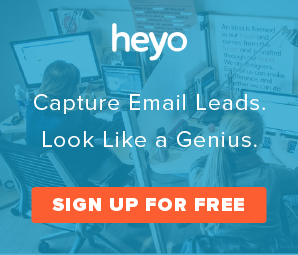3 Creative Ways to Bring Life to Your Bland E-mail Marketing
May 30, 2013 | By Jim Risner | 4 Comments">4 Comments
Having permission to be in someone’s personal inbox is a huge responsibility. It can be as direct as sending a push notification to your subscribers wherever they are. The same second you push send, is the same second you grab their attention.
Making that message count could be the most important decision you make for the fate of your marketing all day.
Your social networks should be leveraged to help build your e-mail lists and brand image, not drive the majority of your traffic. Your e-mail list is where people have made a commitment to your brand, and you have to nurture that relationship carefully for your e-mail marketing to be effective.
Resurrect your bland email marketing with these creative approaches to help you stand out from the spam.
1. Train Your Readership
Humans are creatures of habit. When your e-mail marketing isn’t consistent, you can expect a higher rate of unsubscribes, believe it or not. We’re all guilty of spur-of-the moment e-mail blasts and messages to the incorrect list. You will need to create positive habits, to break the bad ones.
When users opt-in to your list, they should be greeted with an auto-response of precisely the types and frequencies of e-mail message they will be receiving. Not only will this prepare them for what’s coming, but it will force you to develop a content schedule.
As Neil Patel of QuickSprout preaches, a consistent content schedule is the most important factor to building an active e-mail list and following. We used this same strategy (you would have gotten the e-mail if you’re subscribed to this blog) when we sent our readers the hand drawn content schedule seen below.

Results: Matching expectations to consumer requests. Lower rate of unsubscribes because they know precisely what types of e-mails to receive and how frequently.
2. Scrub Your Lists
We’ve all been there before. Enter your e-mail to get some piece of content, free software or course that you can’t believe is ‘free’ because it was valued at $347. You may even enter that Yahoo e-mail address you never use because you know the follow up messages are sure to be spammy.
Your subscribers are no different. Some of them probably have never opened a single one of the messages you’ve sent. In MailChimp, you can sort subscribers by rating, and unsubscribe those who are non-active.
Chris Brogan took a little more of a direct approach, as seen below:
Subject: An Invitation to Unsubscribe
Message: I’ve been working really hard to build this newsletter into a product of great value to you. And MANY people have been really kind and hit reply and told me that they even look forward to receiving my newsletter. Do you have any idea how rare that is? As a marketer, most people are hoping (begging) for a 20% open rate. Me? I’m doing maybe twice that on good weeks.
But here’s the thing: what if you’re just receiving this email because it seems like a good idea, but you’re not really reading it? You’re no longer interested. You’re not doing anything with the information or even liking it any more.
If that’s you, I want to invite you to unsubscribe. <— that’s the link! You click that, you push the 2nd option way down at the bottom. You hopefully don’t say yes to the question that follows, and pow. You’re free. You’re out. You get at least one part of your inbox yet.
Results: Unsubscribes from those uninterested = higher open + click-through rates.
3. Focus Your Outcomes
The more links you have in your e-mails, the weaker your message.
Every e-mail you send should have an explicit end goal, just like your website and landing pages. Keep the number of calls-to-action to a minimum. The more links you add, the more it dilutes your message. There should be an extremely clear path to your desired outcome.
Whether that’s directly to a sign-up page or simply to build a relationship, your subscribers should never have to make the decision of where to click or how to respond.
Try using a simpler template with personable rhetoric to get a more positive response. I try to use words like ‘ you’ to make the reader feel like it is a personal message. See this e-mail I received from Optimizely when signing up for one of their lists; no links, just a personal note.

Results: The CEO, wanted to speak with me?? Of course I chatted with him, because it sincerely felt like he dropped me a quick line to talk about their new products. No fancy design; no pretty footer.
I’ve tested countless e-mail marketing tactics to help increase internal conversions here at Heyo, and these just scratch the surface of opportunity to add flavor to your current e-mail marketing efforts.

